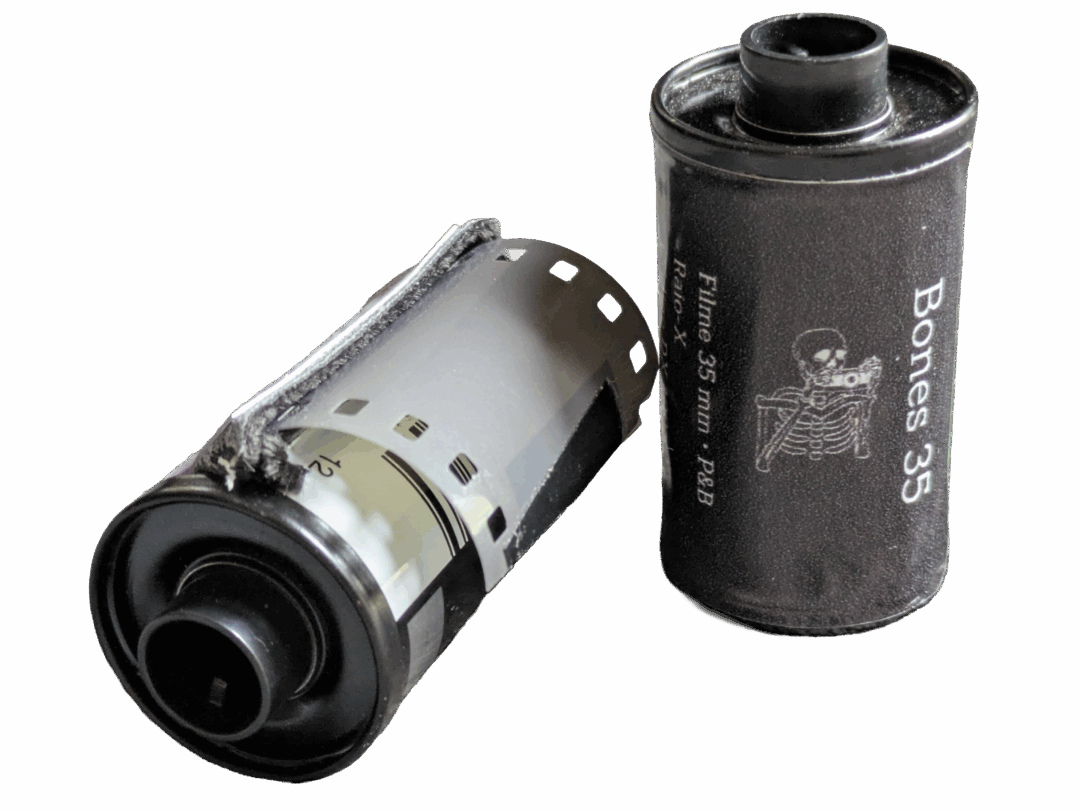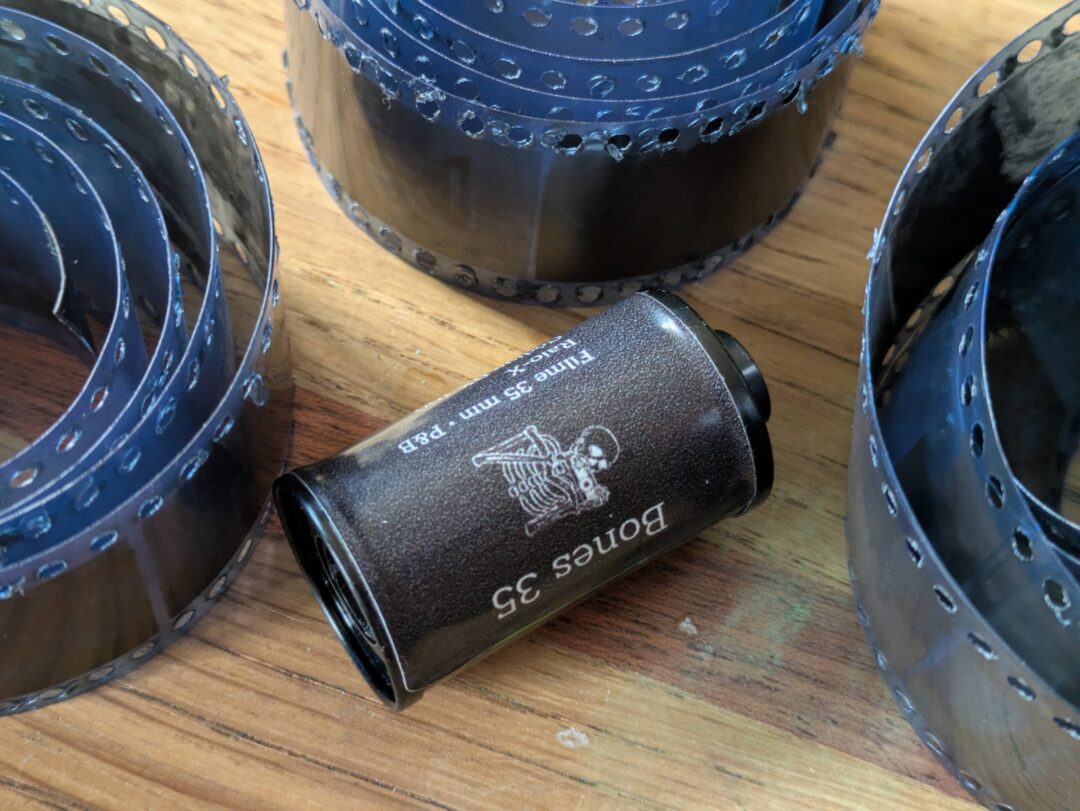Support me on Patreon for early access previews, rewards and giveaways!
Contact Me
Or use the contact form below.
Support me on Patreon for early access previews, rewards and giveaways!
Or use the contact form below.
Bones is a black-and-white 35mm film produced in Brazil by a small independent company. Interestingly, this stock is repurposed medical radiography film, making it distinct from conventional visible-light photographic emulsions.
Bones produces deep, moody shadows and combined with somewhat unpredictable textures. Images are often marred (or blessed) with scratches and strange textures, imperfections that give the film a gritty, lo-fi character well suited to creative or experimental work.
It delivers dramatic results and can create unique images, if you embrace its quirks and beautiful imperfect.
| Type | BW | Price | Budget* |
| Brand | Bones (Brazil) | Contrast | Medium/High |
| ISO | Unrated | Shadow Detail | Low/Medium |
| Format | 35mm | Grain | High |

Pros
Cons
Bones Films is a small, independent brand based in Brazil that specialises in converting non-photographic emulsions into creative film stocks. The Bones B&W film is a medical radiography film originally designed for X-ray imaging, not for visible light. It is double-sided, meaning there is emulsion on both sides of the clear polyester base.
Because it lacks the protective resin layer typical of standard photographic film, it is extremely delicate and must be handled with care. The stock is orthochromatic, meaning it is insensitive to red light and can be processed under red safelight conditions. It is also noted as being UV sensitive, which can produce haze in outdoor conditions if a UV filter is not used. It is not recommended to keep this film in the fridge, the manufacturer advised changes in moisture can adversely affect this film.
This film has no fixed ISO rating since it was never intended for daylight photography. Shooters report usable results anywhere between ISO 100 and ISO 3200, and some claim to have acceptable results up to ISO 8000 by extending development times. The flexibility of exposure, combined with its rough-edged aesthetic, makes it a popular experimental choice among adventurous photographers.
Despite the long list of drawbacks, I enjoyed shooting Bones. It was the perfect stock for some eerie Halloween photography.
The high silver content gives deep, moody shadows and dramatic tonal separation. The film has a lot of personality. From the uneven coating and round hand-punched sprocket holes, to the random scratches and textures. If you lean into the chaos, you end up with beautifully imperfect images. This is not a film for fine-art consistency but one that rewards creative risk.
The negatives were noticeably curly and quite difficult to scan. I wanted to include the sprocket holes in my scans because they add to the rough, mechanical aesthetic, but this made the process even trickier.
I shot three rolls in total (four, if you count the one sacrificed to my development experiments). One roll advanced with only minor jams, giving a few partial overlaps. The second jammed halfway through, forcing me to use a film-changing bag to manually advance the film past the problem sprockets. The final roll gave up entirely at the halfway point, so I rewound and ended the session there.
Some users reported fogging when shooting at higher ISOs. To minimise this, I used a UV filter for all my shots.
Because this film has no fixed ISO rating, I shot my tests between ISO 100 and ISO 3200 to find a baseline. Shooting in autumn light, I settled on ISO 400, which gave me enough flexibility for the changing conditions.
I tested several development times on clipped pieces of film using ADOX D-76 Classic. After five rounds of experimentation, I found that 8 minutes at 25 °C gave negatives with usable density and good detail in the midtones when metering at ISO 400. This setting became my standard for all subsequent rolls.

I shot my Bones rolls around Kensal Green Cemetery in London, one of the city’s “Magnificent Seven” historic cemeteries. The locations suited the film perfectly. Ornate monument stonework, overgrown ivy, and autumn gloom combined with the film’s natural contrast to produce an atmosphere straight out of an early horror film.
I metered for midtones and shadows to retain more detail in these areas, at ISO 400. Development was carried out at home in ADOX D-76 Classic, 8 minutes at 25 °C. These choices were based on my own experimentation, and optimum times based on snippet test prior to my trip to London.
And now, to the photos! I shot this roll of film in the Autumn of 2025, just in time for Halloween. Enjoy!
What photograph caught your eye the most? How did this location make you feel? Do you have a question? Let me know by leaving a comment!
Join My Adventures!
I add new content every week, ranging from exciting new locations to blog articles about my road trips. My beautiful newsletter will bring my photographic adventures direct to your inbox!
Your email address will not be shared, or publically displayed. I will only use your data to send you the newsletter, as outlined in the Privacy Policy. You can unsubscribe at any time, via the opt-out link included in every email.